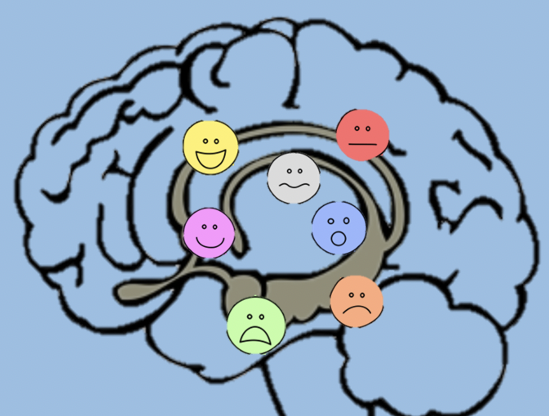Joy, anger, surprise, sadness, fear…all of these are examples of emotions we feel throughout our lives or even throughout a day. Emotions are a normal part of life. We might feel joy around our friends, surprise when we hear good news, or sadness when we lose something. The brain plays a big role in these emotions that we are feeling.
In a previous blog we talked about the nervous system, and today we are going to discuss the limbic system. The limbic system is responsible for dealing with emotion, memory, and much more. It contains many different structures like the hypothalamus, amygdala, and hippocampus. We will talk about each of these in greater detail.
First, let’s look at the hypothalamus. The hypothalamus is very connected to other parts of the brain and is an important control center. It helps maintain homeostasis. Homeostasis is keeping something at a regular point. A good example of homeostasis is body temperature. Your body wants to be at a constant temperature. However, if you go outside in the winter you can get too cold or too hot in the summer. Shivering in the winter cold and sweating in the summer sun is your body’s way of trying to return to a normal temperature. The hypothalamus has many other important jobs. According to Shippensburg University, the hypothalamus is also responsible for regulating hunger, thirst, pain response, and anger and other emotions. It does this by taking signals from other parts of the body and interpreting them. Next time your stomach growls, you can thank your hypothalamus for letting your body know it’s time for a snack. Remember learning about the nervous system? The hypothalamus is also connected to the nervous system to help control pulse, blood pressure, and breathing. The hypothalamus is obviously very busy with all of these important jobs!
The amygdala is another part of the limbic system. The amygdala deals more with emotions. Not only does the amygdala help you feel certain emotions, but it can help you tell what emotions other people are feeling. For example, if you see someone laughing, your amygdala helps you interpret that that person is probably feeling happy.
Next, we’ll focus on the hippocampus. Do you remember something fun you did over the summer? You can remember long-term memories thanks to the hippocampus. The hippocampus helps sort our memories and form connections between similar memories. It helps us recall stored memories. According to Dartmouth Neuroscience, the hippocampus helps in the process of encoding memories and retrieving them. If you read the “Creating Memories from Scratch” Brain Blog, you hopefully remember what encoding and retrieval are. Your hippocampus helps you when you are learning a new surrounding or remembering directions.
As you can see, the limbic system is home to many important structures in your brain. It also includes many others. Overall, the main jobs of the limbic system are to regulate body function, interpret and sense emotion, and assist in the encoding and retrieval of memories. The limbic system has many complex jobs, but all of them help you function in your normal life. All the emotions you feel would not be possible without the limbic system!
